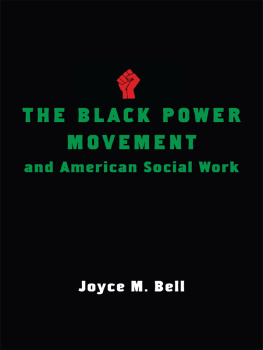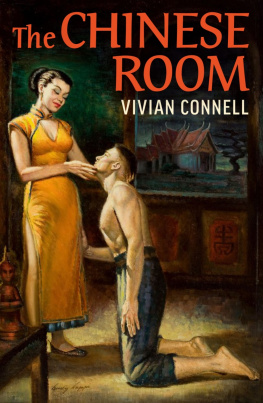Copyright 1970 BY F ORTRESS P RESS
50TH ANNIVERSARY EDITION 2020 BY F ORTRESS P RESS
Biographical note image 2020 The estate of Rev. C. T. Vivian personal collection
Original cover design by H. Harris
All rights reserved. No part of this publication may be reproduced, stored in a retrieval system or transmitted in any form or by any means, electronic, mechanical, photocopying, recording or otherwise, without the prior permission of the copyright owner.
Print ISBN: 978-1-5064-7899-9
eBook ISBN: 978-1-5064-7900-2
Library of Congress Catalog Card Number 76-101424
The Moral Confrontation
The United States began with a struggle for civil rights. The specific issuetaxation without representationwas merely a focus for the larger question of whether or not a dominant majority would continue to exploit a subject minority. The American colonists decided that this oppression was not tolerable. They began to protest: first by petition, then by demonstration, and when these proved futile, by armed revolt. America was born as a revolutionary nation.
This is the American heritage: the struggle for freedom, the striving to build a land with liberty and justice for...
That sentence must remain incomplete. Freedom, liberty, equality, and justice are truly parts of our democratic inheritance; but this is an inheritance which we have never fully claimed, for it is inextricably bound to anotherthe legacy of slavery. This too is a part of Americas tradition; and we have been unable to separate one from the other. We have been unable to make the best of our heritage function because we have been unwilling to rid ourselves of the worst. Slavery remains today an unconquered devil, battling with freedom in the minds and the streets of America. That battle is Americas record and its fate.
Fifteen years ago, a new chapter in this record opened, a spontaneous modern response to the condition of the Black minority. It began with a new kind of confrontation, a new style of leadership, and a new sense of urgency which have since then generated conflicts in many other areas of the national life. It was the beginning of what we now call The Movement.
The nature of this movement is often misunderstood. It has been closely identified with individual leaders. Yet it was not something that leaders did to their people as much as something that people did to make leaders. It included many established interests and sources of power. Yet it was never effectively a coalition established at conference tables. Because it was a national movement it sometimes seemed to be nationally organized. Many of us, in fact, tried to make it operate through national organization. Yet it remained a confluence of local and immediate clashes, a self-sustaining chain reaction to the American experience of Black people throughout the land.
The Movement began as an irrepressible social force generated at the very roots of American society, a movement of people determined to force their nation to accept what that nation claimed were its fundamental values.
Rosa Parks, a seamstress from Montgomery, Alabama, is often given credit for initiating what grew into The Movement. For no reason that has ever been satisfactorily explained, Rosa Parks on her way home from work one evening sat down in the front of the bus and refused to move to the back. For this crime she was arrested, and her arrest sparked the Montgomery bus boycott. This boycott brought Dr. Martin Luther King, Jr., into leadership and national prominence. Rosa Parks sit-in took place on December 5, 1955. Thirteen months later, the boycott ended with the integration of the buses.
If we think back to that time, we can remember that Black and white relations had almost always been placed in an economic context. This tradition began with the practical economics of slavery and continued with the theoretical economics of freedom. The question always before the Black man was: What must I do to be free? And the answer that was almost always given by Black and white alike was: Get jobs, salaries, a financial base from which to operate in a materialistic society.
Freedom was conceived of in commercial terms, and indeed there was cause for this. The most visible, and many of the most hideous, aspects of the Black condition were those engendered by poverty. Yet the fact is that when ordinary Black people began to move it was not an economic force which moved them. They sought dignity, not dollars; manhood, not money; pride, not prosperity.
In reviewing the effects of The Movement, this fact is basic to our understanding. It was Martin Luther King who removed the Black struggle from the economic realm and placed it in a moral and spiritual context. It was on this plane that The Movement first confronted the conscience of the nation. This point is crucial, for previously even most Black leaders had been unable to deal with race relations as a moral problem. This was perhaps because the immorality was so immense that it defied ordinary moral categories.
As a nation, America had steadfastly refused to accept the humanity of its Black minority. It had perpetuated an endless series of horrors more ghastly than most of its citizens could imagine or believe.
The excuses contrived throughout the countrys history to explain this behavior offer the most fantastic and laborious distortions of fact and experience. Racism began as rationalization. It began as a justification of the white mans injustice to the Black. The greed that brought Black men into slavery was not alone enough to make the institution bearable to the white conscience. Spurious anthropology was created. Heretical theology was contrived. History was rewritten. Law was remade to fit new customs. These constructs provided the framework for viewing Blacks as something less than human.
In their daily lives, white Americans had to become racists or John Browns in order to preserve their mental balance. For if Blacks were not subhuman then an unspeakable and intolerable crime was being committed. Americans generally preferred to believe that there was no crime. Yet there were many more whites of John Browns persuasion than is commonly known. Sixteen others rode to Harpers Ferry with him. The annals of Southern history document the executions of scores of whites accused of fomenting Black revolt. And the problems which outraged these people are still with us.
Today, the Black condition is relatively unchanged. And in relation to the lavish affluence of the total society, the Black condition has clearly worsened. Because of this, bigotry has remained a psychological necessity for white America, bigotry or John Brownismwhich is precisely what The Movement has released in so many thousands of the nations young.















